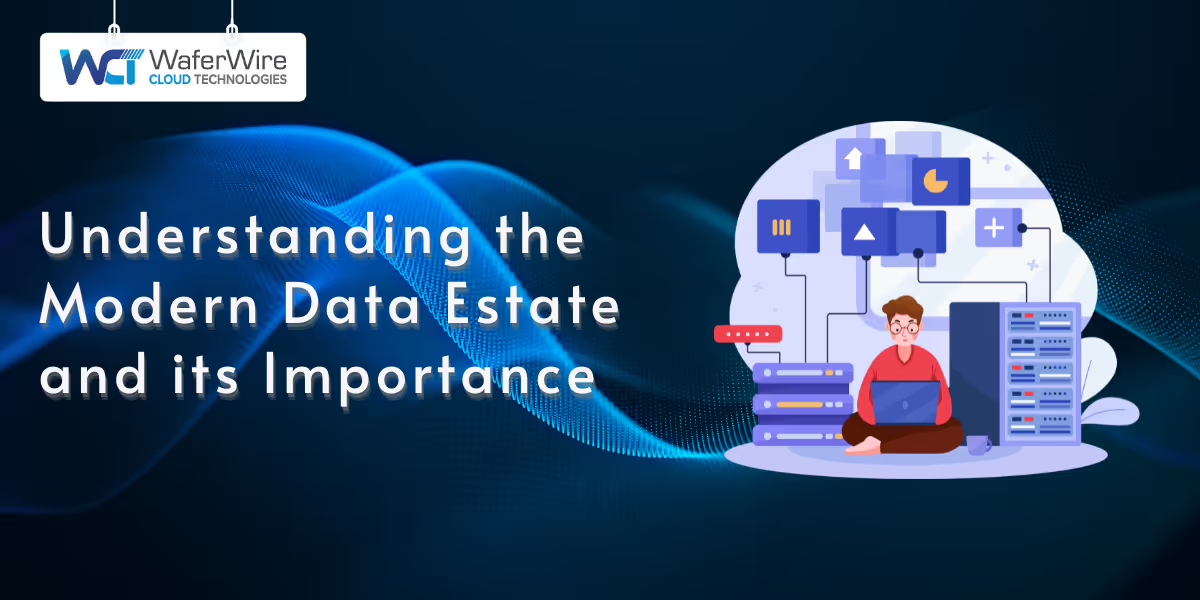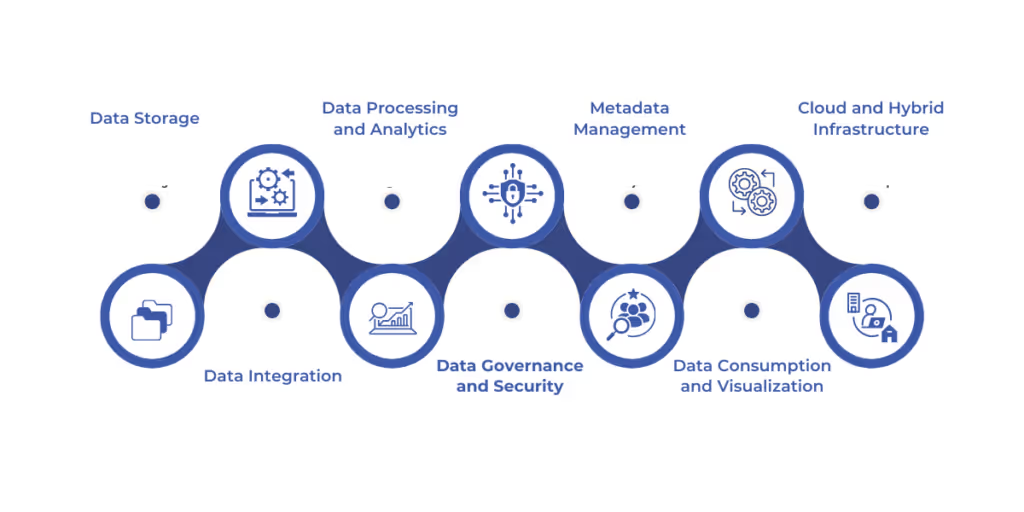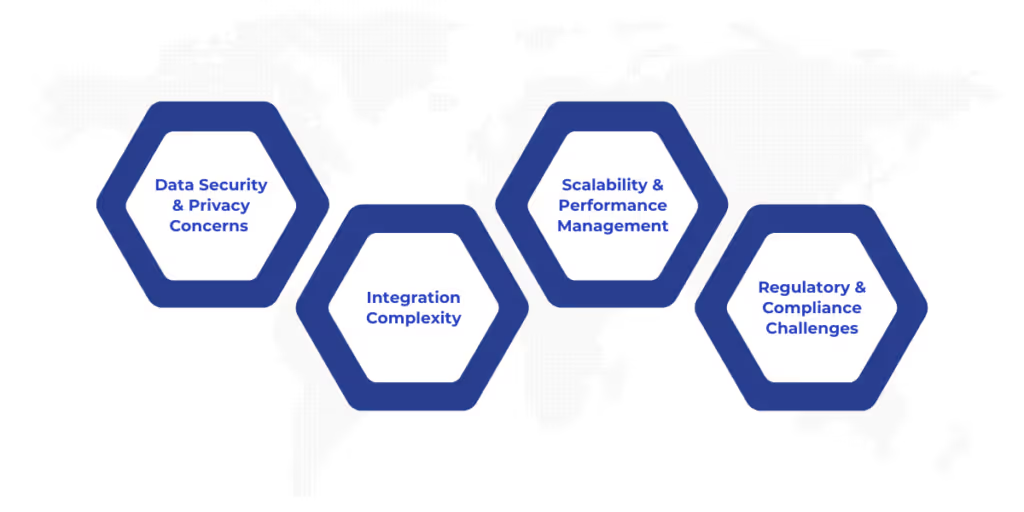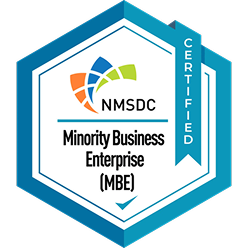

“By 2025, the world will generate 181 zettabytes of data.” This staggering prediction of a study by Exploding Topics highlights the growing challenge of managing, securing, and making sense of vast amounts of information.
Traditional data systems struggle to keep up with the speed, scale, and complexity of modern digital environments. This is where the concept of a Modern Data Estate becomes crucial. It’s not just about storage; it’s about building an intelligent, integrated ecosystem that transforms raw data into actionable insights. Understanding the modern data estate is essential for organizations aiming to stay competitive, make informed decisions, and harness the full potential of their data.
Let’s get started with understanding the basics of Modern Data Estate and how it helps with data management.
A Modern Data Estate is all about a comprehensive, scalable, and integrated data infrastructure that enables organizations to collect, store, process, and analyze data efficiently across various platforms and environments. It encompasses cloud-based, on-premises, and hybrid storage solutions, ensuring seamless data accessibility, security, and governance.
A modern data estate provides the foundation for managing this complexity by supporting real-time analytics, artificial intelligence, and machine learning applications. It helps organizations enhance decision-making, improve operational efficiency, and maintain regulatory compliance in an increasingly complex digital landscape.

A modern data estate consists of various interconnected components that enable seamless data management, processing, and analysis. These components ensure scalability, security, and efficiency in handling vast amounts of structured and unstructured data. Here are the components:
It includes cloud, on-premises, and hybrid storage solutions that securely store structured and unstructured data while ensuring accessibility, scalability, and cost-efficiency.
This enables seamless movement and synchronization of data across multiple sources, ensuring consistency and eliminating silos through ETL (Extract, Transform, Load) and real-time data streaming solutions.
It involves computational frameworks and analytics platforms that process large datasets, perform real-time analysis, and support machine learning and artificial intelligence-driven insights.
This establishes policies, compliance frameworks, and security protocols to ensure data integrity, regulatory compliance, access control, and protection against cyber threats.
It organizes and maintains information about data assets, ensuring data discoverability, classification, lineage tracking, and efficient management of datasets across the organization.
It provides business intelligence (BI) tools, dashboards, and reporting systems that transform raw data into actionable insights for decision-makers.
This supports flexible deployment models that optimize data storage, processing, and accessibility across cloud, on-premises, and hybrid environments based on business needs.
Now that the basics of Modern Data Estate are clear, it is time to learn about the steps to effectively implement a Modern Data Estate.
Establishing a modern data estate requires a structured approach to ensure efficient data management, security, and scalability. The following steps guide organizations in building a robust and future-ready data infrastructure:
Evaluate existing data systems, storage solutions, and workflows to identify inefficiencies, bottlenecks, and security risks. Understanding the current state helps in defining clear objectives and determining the necessary upgrades.
Establish a comprehensive data strategy aligned with business goals. Define key objectives such as data accessibility, analytics capabilities, compliance requirements, and integration with emerging technologies like AI and machine learning.
Select cloud, on-premises, or hybrid storage based on scalability, performance, and cost considerations. Implement efficient data processing frameworks to support real-time analytics and high-performance computing.
Ensure seamless data flow by integrating disparate sources using ETL pipelines, APIs, or data lakes. If migrating to cloud or hybrid systems, execute a structured migration plan to avoid data loss or inconsistencies.
Develop policies for data privacy, access control, and compliance with regulatory standards. Implement encryption, identity management, and continuous monitoring to safeguard data integrity and prevent breaches.
Leverage business intelligence tools, AI models, and real-time analytics to derive actionable insights. Ensure compatibility with big data frameworks and scalable architectures for future expansion.
Provide intuitive dashboards, self-service analytics tools, and reporting systems to ensure stakeholders can access, interpret, and utilize data effectively for decision-making.
Regularly assess system performance, optimize storage and processing efficiencies, and adopt new technologies. A modern data estate should be dynamic, evolving with business needs and technological advancements.
Now why should you go through all these steps? Why should you prioritize Modern Data Estate? Because it is important for your business to make it solid from the core. In the next section, we will explore the importance of a well-run modern data estate.
A well-managed modern data estate enhances operational efficiency, strengthens security, and supports data-driven decision-making. It ensures organizations can effectively store, process, and analyze data while maintaining scalability and compliance. Here is the significance of Modern Data Estate:
It ensures seamless access to structured and unstructured data across departments, enabling real-time decision-making and enhancing collaboration among teams.
It implements robust security protocols and governance policies to protect sensitive data, ensuring compliance with regulatory standards such as GDPR and HIPAA.
Scalability and flexibility adapt to evolving business needs by supporting cloud, on-premises, and hybrid infrastructures, ensuring optimal performance and cost efficiency.
It enables high-speed data processing, real-time analytics, and AI-driven insights, empowering organizations to make informed, data-backed decisions.
It facilitates seamless data integration across multiple sources, ensuring consistency, accuracy, and unified insights for better operational efficiency.
This reduces infrastructure costs by optimizing storage, processing power, and resource allocation, ensuring efficient data management without unnecessary expenditures.
It provides advanced analytics, visualization tools, and reporting systems to help executives derive actionable insights and drive strategic growth.
This supports emerging technologies like machine learning, IoT, and blockchain, ensuring organizations remain competitive and adaptable to future technological advancements.
A well-structured modern data estate not only enhances efficiency and security but also empowers organizations to unlock the full potential of their data.
However, despite its benefits, implementing and managing a modern data estate comes with challenges and risks that organizations must address. In the next part, we will explore these challenges.

While a modern data estate offers numerous advantages, organizations face several challenges in its implementation and management. Addressing these risks is crucial to ensure data integrity, security, and long-term operational efficiency. Here are some of the risks:
Protecting sensitive data from cyber threats, unauthorized access, and breaches is a significant challenge. Organizations must implement strong encryption, access controls, and compliance measures to safeguard data privacy.
Merging data from diverse sources, legacy systems, and cloud environments can lead to inconsistencies and compatibility issues. Effective data governance and integration strategies are essential to maintain accuracy and reliability.
As data volumes grow, maintaining system performance and scalability becomes challenging. Organizations must invest in flexible storage and processing solutions to ensure seamless data operations without compromising speed or efficiency.
Adhering to evolving data regulations like GDPR, HIPAA, and CCPA requires continuous monitoring and updates. Failure to comply can result in legal penalties and reputational damage.
Addressing these challenges is essential for organizations to maximize the benefits of a modern data estate while ensuring security, compliance, and efficiency. A key aspect of data management involves choosing the right storage architecture, often leading to a comparison between Data Lake and Data Warehouse. Let’s talk about the comparison between Data Lake and Data Warehouse.
A Data Lake and a Data Warehouse serve distinct purposes in data management. While both store and process data, they differ in structure, use cases, and processing methods. Below is a comparison of their key characteristics:
FeatureData LakeData WarehouseData StructureStores raw, unstructured, semi-structured, and structured data.Stores structured, processed, and organized data.Processing MethodSchema-on-read (data is structured when accessed).Schema-on-write (data is structured before storage).Storage CostGenerally lower due to inexpensive cloud-based storage.Higher due to structured format and indexing.Speed & PerformanceSlower for queries due to large raw data volume.Faster query performance optimized for analytics.Use CasesIdeal for big data, machine learning, and real-time analytics.Best for business intelligence, reporting, and structured analytics.Data Governance & SecurityRequires strong governance due to raw data storage risks.More controlled with predefined security and compliance standards.
Both systems have their advantages and are often used together in modern data estates to balance flexibility and efficiency in data management.
Now, lastly, let’s look into what Modern Data Estate holds for the future!
As data continues to grow in volume and complexity, modern data estates are evolving with emerging technologies to enhance efficiency, security, and analytics capabilities. Here are the key trends shaping the future of modern data:
Total global Modern Data Estate storage is projected to exceed 200 zettabytes by 2025, including both private and public IT infrastructures. The global Big Data analytics market is expected to continue growing, driven by advancements in AI, IoT, and cloud computing. Increased automation, decentralized architectures, and enhanced security will define the future of modern data estates.
A well-structured modern data estate is essential for organizations seeking to harness data for strategic growth, innovation, and efficiency. It provides a scalable and secure foundation for real-time analytics, AI-driven insights, and regulatory compliance. As businesses navigate an increasingly data-driven landscape, modernizing their data estates is no longer optional but a necessity for maintaining competitiveness.
By embracing emerging technologies and refining their data strategies, organizations can unlock new opportunities, enhance decision-making, and future-proof their operations. Investing in a modern data estate today ensures long-term success and adaptability in an ever-evolving digital economy.
Unlock the power of your data with WaferWire’s Data Strategy & Consulting Services. At WaferWire, we align data initiatives with your business goals to maximize impact. With a clear vision and actionable roadmap, we guide you in transforming data into a strategic asset. Our tailored strategies focus on governance, integration, and advanced analytics. Contact us today to get started with your improved data governance!

